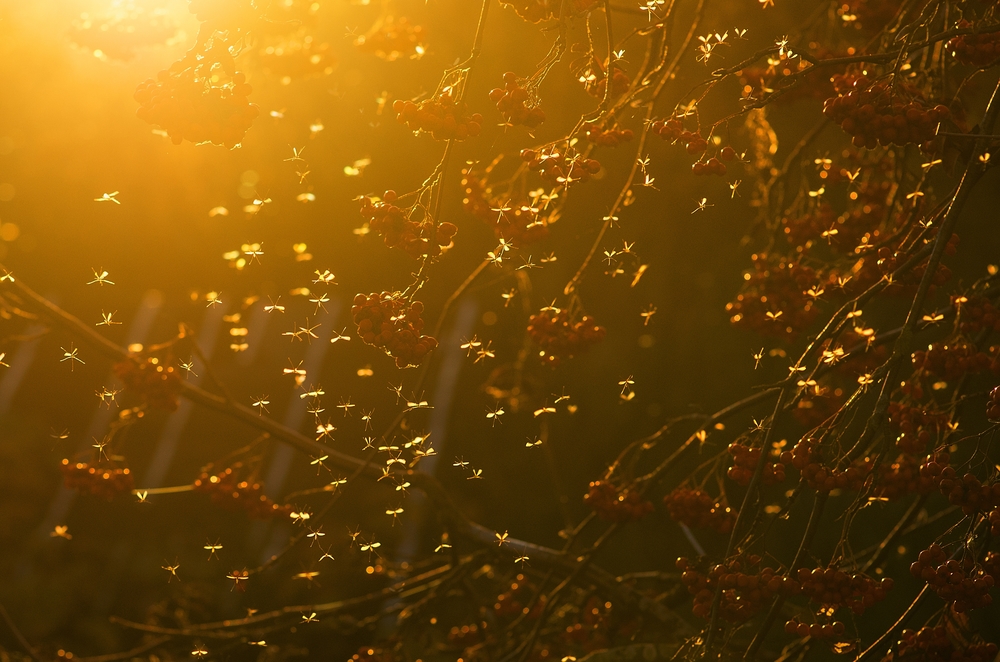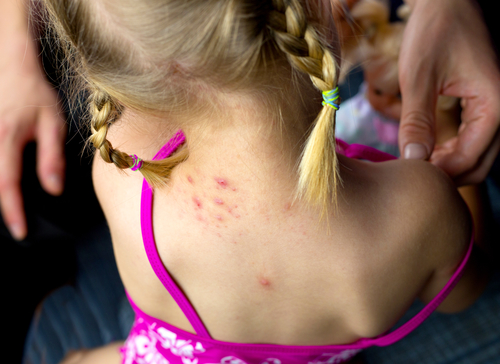Sand Flies – aka Midges Are On The Loose! How to Deter Sand Flies
Queensland residents close to the beach and wetlands know all about sand flies. Sand Flies, also known as midges or midgies are tiny flying insects that, although smaller than mosquitoes, can cause much more harmful bites. Sand fly bites with their anti-coagulating saliva create damage to subcutaneous tissue – which means raised, painful or itchy bites that can, over time, turn to allergic reactions. Thankfully, unlike mosquitoes, they aren’t known to transmit blood borne disease. They’re less vulnerable to standard insect repellants and small enough to get through mozzie screens. Their bites… will drive you mad. So itchy. So many. So irritating. So whether you’re moving to Queensland or living here and going insane with their bites, we asked our resident building inspector to give his insights into avoiding midge misery.

Midges in Brisbane, Moreton and Redlands
Because sand flies love a good wetland, mangrove or sandy beach environment, greater Brisbane is hard hit during midgie season. The worst hit spots are within 400 meters of a wetland area. Midgies are also terribly fliers and get carried easily by wind meaning they’re a regular and irritating pest along the Ipswich corridor. Sand flies can be found in swarms in Brisbane from spring to early autumn however some years more swarms are reported and earlier in their season.
Sand Flies across Queensland
Anywhere there’s a wetland, there’s sandflies in Queensland. Coastal regions are where you find the typical “Biting Midge” but inland freshwater creeks, billabongs and wetlands may sport different specifies of biting sandflies. In short, where there’s water in Queensland, there may well be these little pests. Coastal areas however, are their preferred habitat and where they thrive. Sand flies can only travel a few hundred meters from their habitat, so, avoid buying a Queensland property too close to wetlands.
Personal sand fly repellents
The most commonly recommended personal sand fly repellents are:
- Deet sprays
- Eucalyptus oil
- Tee tree oil
- Do terra insect blend
Others suggest more unorthodox deterrents including vapor rub, the inside of a banana peel and vitamin B rich foods (including vegemite). Some suggest insect repellent plants to help keep the bitey activity down in your garden, these may include:
- Lavender
- Rosemary
- Geraniums
- Nasturtiums
- Marigolds
- Chrysanthemums
- Pitcher Plants and Venus Fly Traps
Dealing with sand flies when you have allergies
When a member of your family develops a sand fly allergy, you may need to call in the experts to keep midgie activity to a minimum around your home. Your doctor may recommend a strong DEET based personal spray but this isn’t desirable daily or long term.
Deterring sand flies at home
Pest control companies may be able to help with prevention of midge infestations but, if you live close to the coast, you may be stuck with them. Here’s what our pest control expert suggests:
- Keep trees and plants trimmed and away from the home
- Repair small holes in screens
- Avoid leaving pooled water around after rain, especially if you have sandy soil
- Do not water gardens at sunset, when midgies are most active
- Use mosquito coils outdoors
- Use fans in summer to “blow them away” literally
- Wear long sleeved clothing
Pesticides including d=limonene and linalool can act as a highly effective deterrent for outdoor areas. It is not recommended that you attempt to distribute these deterrents yourself as they can be toxic to pets and small children if not handled by a professional.





